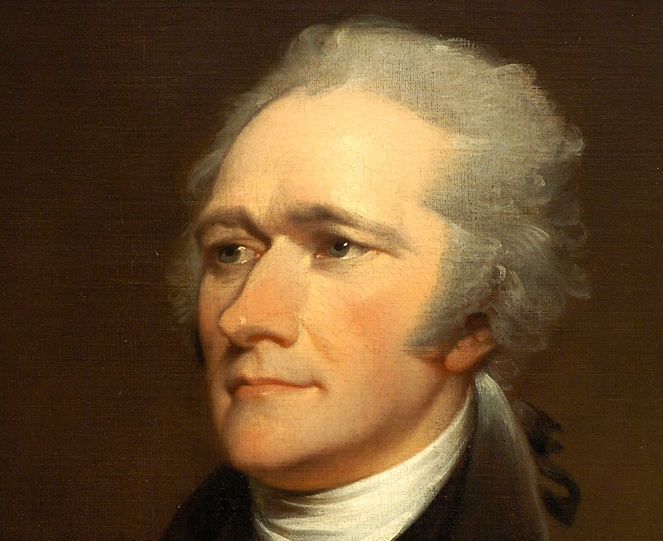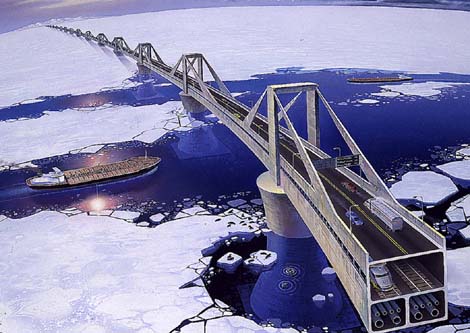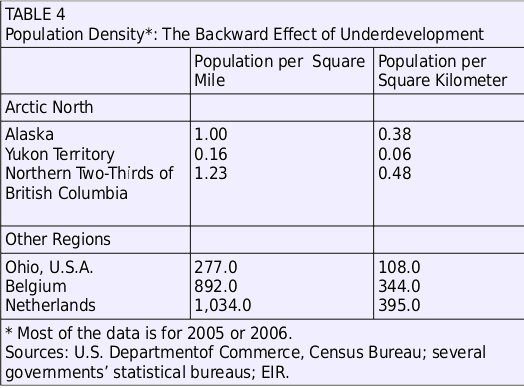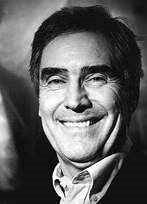AVOGADRO’S HYPOTHESIS AND ATOMIC WEIGHT (WHEN 2 + 1 = 2)
by Larry Hecht March 29, 2005
(This is the first in a series of pedagogicals which will address the scientific basis of nuclear power from a conceptual, historical standpoint. The figures can be accessed at www.wlym.com/~bruce/atomicweight.zip).
Our modern understanding of the atom and the microscopic domain has its origin in two parallel lines of development in experimental science which date to the period from approximately 1785-1869. This experimental work closely overlaps the developments in mathematics which we have been studying respecting the Gauss-Riemann complex domain, and a patient and not-too-literal approach to its study will lead to many beautiful realizations of the conceptual connections. One track is the Ampere-Gauss-Weber electrodynamics upon which the greater part of modern experimental physics practice rests. The other is the development of the science of chemistry, from the work of Antoine Laurent Lavoisier (1743-1794) to Dmitri Mendeleeff’s 1869 formulation of the periodicity of the elements as arranged by atomic weights. Modern physical chemistry, including nuclear chemistry and the Pasteur-Vernadsky tradition of modern biogeochemistry, owes its existence to these latter developments.
We shall focus here on the second of these two important lines of development.
Most people have heard the term “atomic weight.” What does it mean? To believe in such a notion, we must first accept the existence of a very small, invisible thing called an atom; we must further suppose the existence of common species of atoms, and that each exemplar will exhibit the same properties as any other; finally, we must imagine that we might find some means of weighing this almost non-existent entity. Not only has this proven possible, but, strange as it might seem, the concept of atomic weight lies at the foundation of nearly all the breakthroughs of modern science and technology. Dmitri Mendeleeff’s discovery of the Periodicity of the Elements rests upon this principle, as do all the developments which have allowed us to harness power from the atomic nucleus. The curious anomaly in the atomic weight of helium–that it is less than the sum of the weight of its constituent particles–was the basis for the recognition that fusion energy would be possible. (The possibility of realizing energy from this anomaly, which became known as the “mass defect,” was described in a 1914 paper by William Draper Harkins, the teacher of our friend Dr. Robert Moon). The nuclear chemistry which is the basis for heavy-element fission, the source of power for nuclear reactors, also rests on the concept of atomic weight. Thus, given its importance to the progress of all modern science, we have decided to devote this exercise to an outline of how the concept of atomic weight came about, anticipating that readers will find a way to pursue the further study and experimentation required for a deeper understanding.
A doctrine of atomism–that everything is made up of tiny and indivisible particles–existed since ancient times, its most famous proponent being the Eleatic philospher, Democritus. But the atom of chemistry was not conceived by the followers of Democritus nor his modern reviver Gassendi, but rather by thinkers who tended toward the tradition of Plato, Cusa and Leibniz. The chemical atomic theory, upon which the concept of atomic weight is based, developed in the first decade of the 19th Century out of work centered around the Ecole Polytechnique in Paris. The clear development of the concept of atomic weight took place over the course of several decades following that, led by the inspirer of Mendeleeff, Charles Frederic Gerhardt (1826-1845). Its acceptance was not achieved until a famous international congress of chemists in Karlsruhe in 1860, where an intellectual batttle led by the Italian Stanislao Cannizzarro (1826-1910) finally settled the question.
The experimental development of the concept of atomic weight begins with the study of gases. By the first decade of the 19th century chemists had produced and identified a variety of common gases, including hydrogen, oxygen, nitrogen, chlorine, ammonia, hydrogen chloride, among others. Through techniques pioneered by Lavoisier and refined by subsequent investigators, it was possible to measure quite precisely the volume and weight of gases. When water was decomposed, it could easily be shown that two gases were produced (named by Lavoisier hydrogen and oxygen), in the proportion of two volumes to one (Figure 1–Mendeleeff, Fig. 19, p. 114). By decomposing ammonia by the action of an electric spark, nitrogen and hydrogen gas was produced in the proportion of three volumes to one. Through a great number of experiments with different gases, Joseph-Louis Gay-Lussac (1778-1850) came to the recognition known as his First Law: That the amounts of substances entering into chemical reaction occupy under similar physical conditions in a gaseous or vaporous state, equal or simple multiple volumes. This is also known as the law of combining volumes or the law of multiple proportions. It is a curious result, and hardly an obvious one, if you think about it.
It was also possible to weigh the gases,<fn. 1> and as hydrogen was by far the lightest, it was convenient to compare the weight of a gas to an equal volume of hydrogen. This ratio became known as the vapor density. For oxygen it was 16, for nitrogen 14, for ammonia 8.5, and for water vapour 9. These numbers, too, contained a paradox, for why should a quantity of ammonia, which contains nitrogen, and a quantity of water which contains oxygen, weigh less in proportion to hydrogen than an equivalent volume of the gases they contain? To answer the question, one must have a hypothesis about what a gas is.
Daniel Bernoulli, the son of Leibniz’s collaborator Johann, had proposed an idea in his 1738 book {Hydrodynamics,} which synthesized the research on atmospheric pressure and the pressure and volume relationships of gases that had been carried out by predecesors including Pascal, Torricelli, Mariotte, and Boyle. Bernoulli supposed that a gas, or elastic fluid as he called it, consisted of a great number of tiny, invisible particles which became agitated upon heating, and produced pressure by striking against the walls of its container. Bernoulli’s kinetic theory of gases became enormously important for physical chemistry in the 19th century, even though it was formalized by Clausius, Maxwell, and others into a doctrine (entropy) which was the very opposite of the thinking of its originator. <fn. 2>
Another paradox about the weight and volume of gases arises when we consider the composition of water. We noted that it can be easily shown that in the decomposition of water, two volumes of hydrogen are produced for every volume of oxygen. These gases may be brought back together into a mixture known as detonating gas. When this mixture of two parts hydrogen and one part oxygen is ignited by a spark, an explosion occurs and the product is water. If that quantity of water be vaporized and brought back to the same temperature and pressure of the original gaseous ingredients, it is found that the two volumes of hydrogen plus one volume of oxygen have become two volumes of water vapor! Apparently, 2 + 1 = 2 in the world of water.
[In <fn. 3> I supply Mendeleeff’s description of the apparatus for carrying out this experiment. It is quite detailed, so continue reading, and return to it after you have finished.]
Whether this is paradoxical or not depends not only upon what we think is in the volume of gas, but how much. If we accept Bernoulli’s hypothesis that a gas consists of a great number of tiny, invisible particles, we have still not said how many they are. The first quantitative formulation on this account was proposed by the Italian chemist Count Amedeo Avogadro in a paper published in 1811. Looking at Gay-Lussac’s law and data from his own chemical researches, Avogadro hypothesized that at the same temperature and pressure, equal volumes of any two gases would contain the same number of particles, or molecules as they were coming to be called. His idea was not received with much interest. The only figure of note to embrace Avogadro’s idea, at first, was Andre-Marie Ampere, who was not very well known at the time. <fn. 4> In the 1840s, the French chemist Charles Frederic Gerhardt adopted Avogadro’s hypothesis and labored unceasingly to disprove all doubts concerning its truth. It finally won acceptance at the Karlsruhe Congress in 1860. By 1865, the key to finding the number of atoms or molecules contained in a cubic centimeter of any gas was determined by Josef Loschmidt, then an Austrian high school teacher. <fn. 5>
Employing Avogadro’s hypothesis, we can resolve the paradox of the composition of water, and discover another strange feature of the universe. If the composition of water, as suggested by the volumes obtained upon decomposition, be H20, then one volume of oxygen gas should unite with two volumes of hydrogen gas to produce one volume of the combined gas–H2O. Yet experiment shows the quantity of water vapor produced to be equal to two volumes. The paradox could only be resolved by assuming that the particles of both the hydrogen and the oxygen gas were twins, each consisting of two particles of hydrogen or oxygen. Thus, instead of H and O, the constitutent parts of the two gases must be H2 and O2. Avogadro called them compound molecules; today they are called diatomic molecules. Avogadro found that hydrogen, oxygen, nitrogen and chlorine were of this type and suspected there might be more. Upon detonation, the O2 molecules must break asunder each of the two pieces combining with two hydrogen atoms. Then the description of the formation of two volumes of water from a mixture of detonating gas containing two volumes of hydrogen and one volume of oxygen becomes: 2 H2 + O2 –> 2 H2O.
Avogadro’s conception of a diatomic molecule also served to unravel the paradox noted above concerning the vapor densities. The standard of reference for the vapour density was hydrogen gas, which we have come to see consists of diatomic molecules. Thus, a given volume of hydrogen gas will weigh twice what we would have expected, assuming the constitutents to be single atoms. Oxygen gas, as we have seen from the case of water, is also a diatomic molecule. Thus, the ratio of the weights of equal volumes of oxygen to hydrogen (the vapor density) will correspond to the true ratio of the weights of the atoms, if we assume with Avogadro that equal volumes of gases contain an equal number of constitutent molecules. We can see now, how important it was to establish Avogadro’s hypothesis. Once established, it allows us to infer the relative weights of tiny invisible atoms from the measured weights of large volumes of gases. If we assign the weight of 1 to an atom of hydrogen, we now know that an atom of oxygen will weigh 16. The weight of a molecule of water (H2O) is then 18. But a volume of water vapor weighs only 9 times as much as an equal volume of hydrogen gas, because the hydrogen is diatomic. Nitrogen, it turns out, is also a diatomic gas. Its vapor density of 14 thus denotes its true atomic weight. Ammonia (NH3) has a vapor density of 8.5 and not 17 because it is being compared to diatomic hydrogen gas.
Using Avogadro’s hypothesis, which was rigorously established by Gerhardt in the 1840s, it became possible to establish the atomic weights of a great number of substances, both naturally occurring gases and those substances which could be vaporized.<fn. 6> The unification of the practicing chemists of Europe around the Avogadro hypothesis, which was achieved by Cannizzaro at Karlsruhe in 1860, meant that all the data related to atomic weight could be systematized under one conception, and therefore under one system of measurement. One of the happy results of this achievement was the Periodic Table of the Elements devised by Mendeleeff as an investigation of the peculiar properties of the atomic weights, a topic we shall take up in a future treatment.
– Suggestions on Further Reading: –
I have found the best success in approach to these topics by beginning with a reading of Lavoisier’s {Principles of Chemistry} (available in a Dover paperback edition and as Vol. 45 of the Britannica {Great Books}). In a small weekly telephone meeting, begun about a year and-a-half ago with some interested youth, we completed the Lavoisier text in about 3 to 4 months; some independent experimentation was also carried out during the time. We followed that with a reading of Mendeleeff’s much longer textbook (cited below–parts being scanned in LA for greater access). This reading project is still ongoing. After an initial attempt to jump ahead to Chapter XV, which presents his discovery of the Periodic Table, we returned to page one, taking Mendeleeff’s own advice that a proper appreciation of his discovery requires a grounding in the descriptive and historical aspects of the subject.
NOTES:
(With apologies to Rachel Douglas, I employ the old-style transliteration (Mendeleeff) for consistency with the bibliographic references).
1. Mendeleeff writes in the introduction to his {Principles of Chemistry}: “Gases, like all other substances, may be weighed, but, owing to their extreme lightness and the difficulty of dealing with them in large masses, they can only be weighed on very sensitive balances; that is, on such as, with a considerable load, indicate a very small change in the weight–for example, a milligram in a load of 1,000 grams. In order to weigh a gas, a glass globe furnished with a tight-fitting stop-cock is first of all exhausted of air by an air-pump (a Sprengel pump is the best), after which the stop-cock is closed, and the exhausted globe weighed. If the gas to be weighed is then let into the globe, its weight can be determined from the increase in the weight of the globe. It is necessary, however, that the temperature and presure of the air about the balance should remain the same for both weighings, as the weight of the globe in air varies (according to the laws of hydrostatics) with the density of the latter. The volume of the air displaced, and its weight, must therefore be determined by observing the temperature, density, and moisture of the atmosphere during the time of the experiment. This will be partly explained later, but may be studied more in detail by physics. Owing to the complexity of all these operations, the mass of a gas is usually determined from its volume and its density, i.e. the weight of unit volume.” [D. Mendeleeff, {The Principles of Chemistry,} Third English Edition, translated from the Russian (Seventh Edition) by George Kamensky (London: Longmans Green, 1905) and (New York: Kraus Reprint, 1969), p. 10, note 17.]
2. D. Mendeleeff, op cit., pp. 346-348. Daniel Bernouli, extract from {Hydrodynamica} in Wm. Francis Magie, {A Sourcebook in Physics,} (Harvard Univ. Press, 1963) pp. 247-251. Taken together with Avogadro’s Law (to be explained shortly), the Bernoulli theory leads to the conclusion that under similar conditions of temperature and pressure, gas particles of different mass would each contain the same {vis viva} –the living force of Leibniz, which is measured as one half the product of mass into the square of velocity. The gaseous separation of isotopes, which is used to enrich uranium, makes use of this extension of Leibniz’s original discovery. Refined uranium, which consists of isotopes of two different weights, U-238 and U-235, is combined with fluorine into the gas uranium hexafluoride (UF6). As fluorine has an atomic weight of approximately 19, the hexafluoride gas must contain particles of two different masses, approximately (238 + (6 x 19)) and (235 + (6 x 19)). As the {vis viva} of the particles will be the same at a given temperature and pressure, the U-235-hexafluoride particles must move slightly faster than those of U-238. By pumping the gas through a membrane, a slightly greater concentration of the faster U-235-hexafluoride particles will pass through, and by repeating the process numerous times, separation is achieved.
3. Mendeleeff provides us a description of the apparatus for showing that 2 + 1 = 2 in the world of water. An understanding of the effect of atmospheric pressure on a column of liquid, as established by Pascal and Torricelli, will be necessary to fully comprehend this and all gas volume experiments. The student should be able to master these elementary concepts through self study. Reproducing Dr. Moon’s favorite experiment with atmospheric pressure, as pictured on page 44 of the Fall 2004 “Robert Moon” issue” of {21st Century Science,} will go a long way toward comprehension. Mendeleeff describes the apparatus as follows: “[T]he volume occupied by water, formed by two volumes of hydrogen and one volume of oxygen, may be determined by the aid of the apparatus shown in fig. 64 (Figure 2–from Mendeleef p. 325). The long glass tube is closed at the top and open at the bottom, which is immersed in a cylinder containing mercury. The closed end is furnished with wires like a eudiometer. The tube is filled with mercury, and then a certain volume of detonating gas is introduced. [The gas displaces the mercury being held up in the tube by the atmospheric pressure–LH.] This gas is obtained from the decomposition of water, and therefore, in every three volumes, contains two volumes of hydrogen and one volume of oxygen. The tube is surrounded by a second and wider glass tube, and the vapour of a substance boiling above 100 degrees–that is, whose boiling-point is higher than that of water–is passed through the annular space between them. Amyl alcohol, whose boiling-point is 132 degrees, may be taken for this purpose. The amyl alcohol is boiled in the vessel to the right hand and its vapour passed between the walls of the two tubes. In the case of amyl alcohol the outer glass tube should be connected with a condenser to prevent the escape into the air of the unpleasant-smelling vapour. [In the apparatus pictured the outer glass tube is not connected with a condenser; thus, the puff at the top of the tube is not steam as unfortunately suggested by the caption–LH.] The detonating gas is thus heated up to a temperature of 132 degrees. When its volume becomes constant it is measured, the height of the column of mercury in the tube above the level of the mercury in the cylinder being noted. Let this volume equal {v}; it will therefore contain 1/3 {v} of oxygen and 2/3 {v} of hydrogen. The current of vapour is then stopped and the gas exploded; water is formed, which condenses into a liquid. The volume occupied by the vapour of the water formed has now to be determined. For this purpose the vapour of the amyl alcohol is again passed between the tubes, and thus the whole of the water formed is converted into vapour at the same temperature as that at which the detonating gas was measured; and the cylinder of mercury being raised until the column of mercury in the tube stands at the same height above the surface of the mercury in the cylinder as it did before the explosion [that is, the atmospheric presure in the tube is now the same as before–LH] it is found that the volume of the water formed is equal to 2/3 {v,} that is, it is equal to the volume of the hydrogen contained in it. Consequently the volumetric composition of water is expressed in the following terms: Two volumes of hydrogen combine with one volume of oxygen to form two volumes of aqueous vapour.” [Mendeleeff, op. cit., pp. 325-326]
4. Amedeo Avogadro, “Essay on a Manner of Determining the Relative Masses of the Elementary Molecules of Bodies, and the Proportions in Which They Enter into These Compounds,” {Journal de Physique} 73, 58-76 (1811) [Alembic Club Reprint No. 4] http://web.lemoyne.edu/~GIUNTA/avogadro.html
Andre-Marie Ampere “Lettre de M. Ampere a M. le comte Berthollet, sur la determination des proportions dans lesquelles les corps se combinent d’apres le nombre et la disposition respective des molecules dont leurs particules integrantes sont composees,” {Annales de Chimie,} Tome 90, (30 April 1814) pp. 43-86; 2 planches. Ampere suggests a new series of tetrahedral-based polyhedra which, he suggests, would be the shapes taken by definite compounds.
5. Avogadro’s Number is the number of atoms or molecules of a gas contained in a volume of 22.4 liters at standard temperature and pressure; this volume is used as a reference because it is the volume of a container of hydrogen gas weighing 2 grams. The number of molecules of any gas fitting into such a container at a standard temperature and pressure was determined to be 6.02 x 10 to the 23rd power. This is 602 sextillion molecules, using the American system for naming large numbers, and quite a few by anybody’s count. In a high vacuum of one billionth of an atmosphere, achievable in a laboratory, there remain more than ten billion molecules. Even the so-called vacuum of space is never empty–only less densely populated than other places.
6. Following is the description by Mendeleeff of a method of determining the vapour density of substances which are liquid or solid at ordinary temperature. The method implies knowledge of the relationship of pressure, volume and temperature of gases. Study of the description and diagrams will help the reader to conceptualize the experimental process in working with gases. A study of Lavoisier’s work will help to make the subject clear: “The method by weight is the most trustworthy and historically important. Dumas’ method is typical. An ordinary spherical glass or porcelain vessel, like those shown respectively in figs. 60 and 61 (Figure 3–Mendeleeff p. 321), is taken, and an excess of the substance to be experimented upon is introduced into it. The vessel is heated to a temperature {t} degrees, higher than the boiling-point of the liquid; this gives a vapour which displaces the air, and fills the spherical space. When the air and vapour cease escaping from the sphere, the latter is fused up or closed by some means; and when cool, the weight of the vapour remaining in the sphere is determined (either by direct weighing of the vessel with the vapour and introducing the necessary corrections for the weight of the air and of the vapour itself, or by determining the weight of the volatilised substance by chemical methods), and the volume of the vapour at {t} and at the barometric pressure {h} are then calculated.” [Mendeleeff, op. cit., p. 323 n.]


















